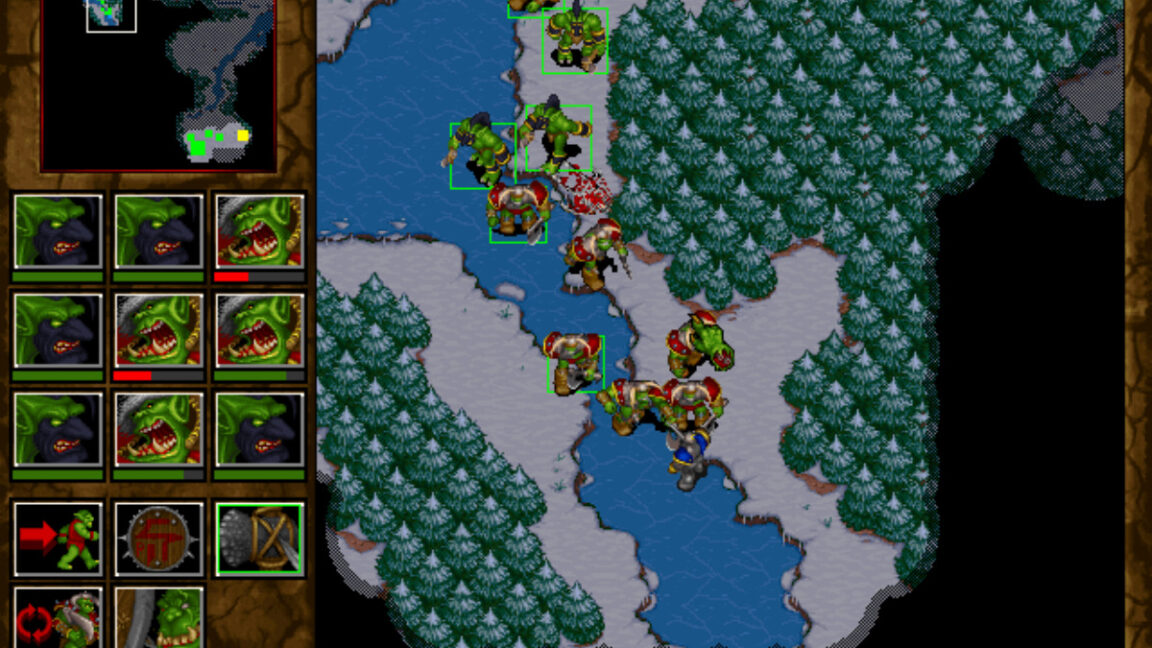GOG’s version goes a bit beyond the classic versions that were on sale on Blizzard.net. Beyond the broad promise that “This is the best version of this game you can buy on any PC platform,” GOG has made specific tweaks to the networking code for Warcraft I, and fixed up the DirectX wrapper for Warcraft II to improve its scaling on modern monitor resolutions.
It’s quite a novel commitment, keeping non-revenue-generating games playable for buyers, even after a publisher no longer makes them available for sale. The Warcraft titles certainly won’t be the only games for which publisher enthusiasm lags behind GOG and its classic gamers.
As noted at the Preservation Program’s launch, for some titles, GOG does not have the rights to modify a game’s build, and only its original developers can do so. So if GOG can’t make it work in, say, DOSBox, extraordinary efforts may be required.
Warcraft II: Remastered lets you switch back and forth between classic and remastered graphics and promises to offer better support for widescreen monitors and more units selected at once.
Credit:
Blizzard
Beyond being tied to Blizzard’s Battle.net service in perpetuity, there are other reasons Warcraft fans might want to hold onto the originals. Blizzard’s 2020 release of Warcraft III Reforged was widely panned as uneven, unfinished, and in some ways unfair, as it, too, removed the original Warcraft III from stores. Reforged was still in rough shape a year later, leading Ars’ list of 2020’s most disappointing games. A 2.0 update promised a total reboot, but fans remain torn on the new art styles and are somewhat wary.
Then again, you can now select more units in the first two Warcraft games’ remasters, and you get “numerous visual updates for the UI.”

